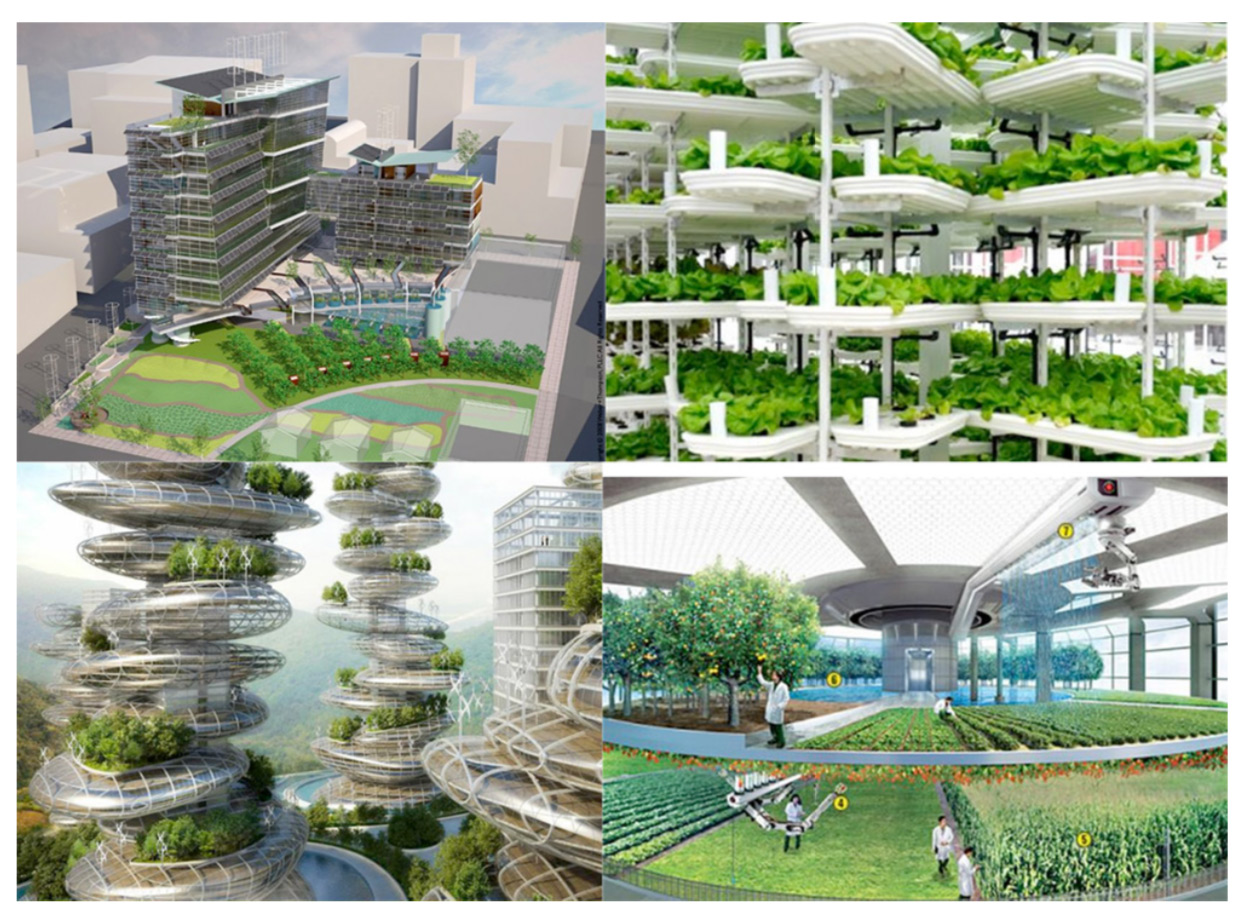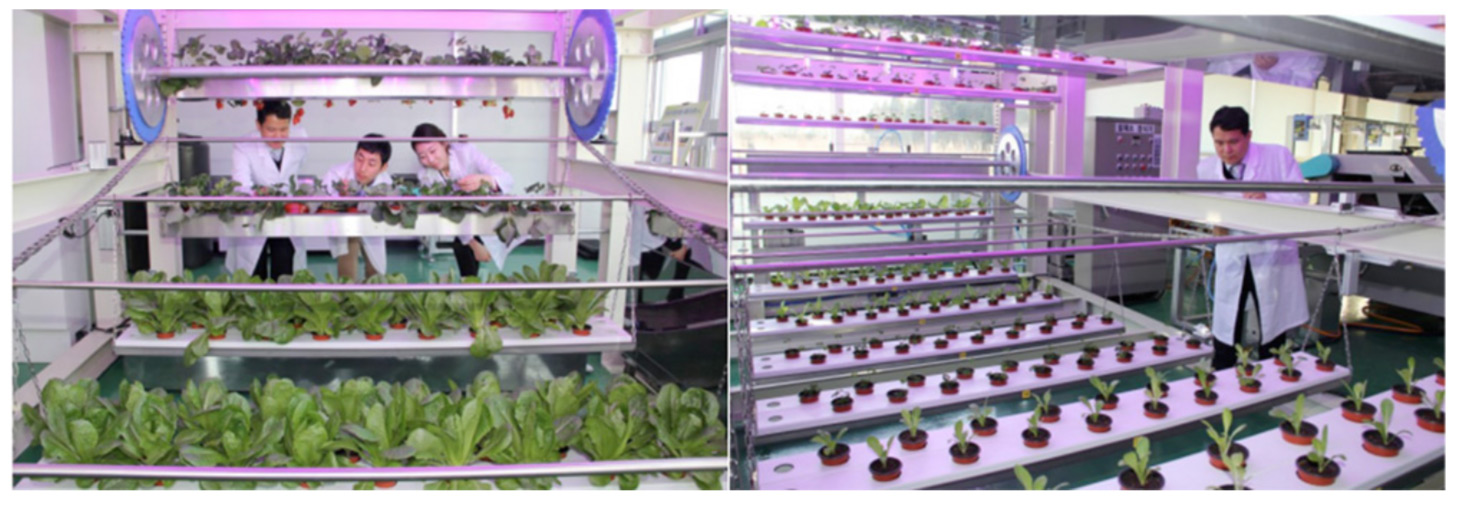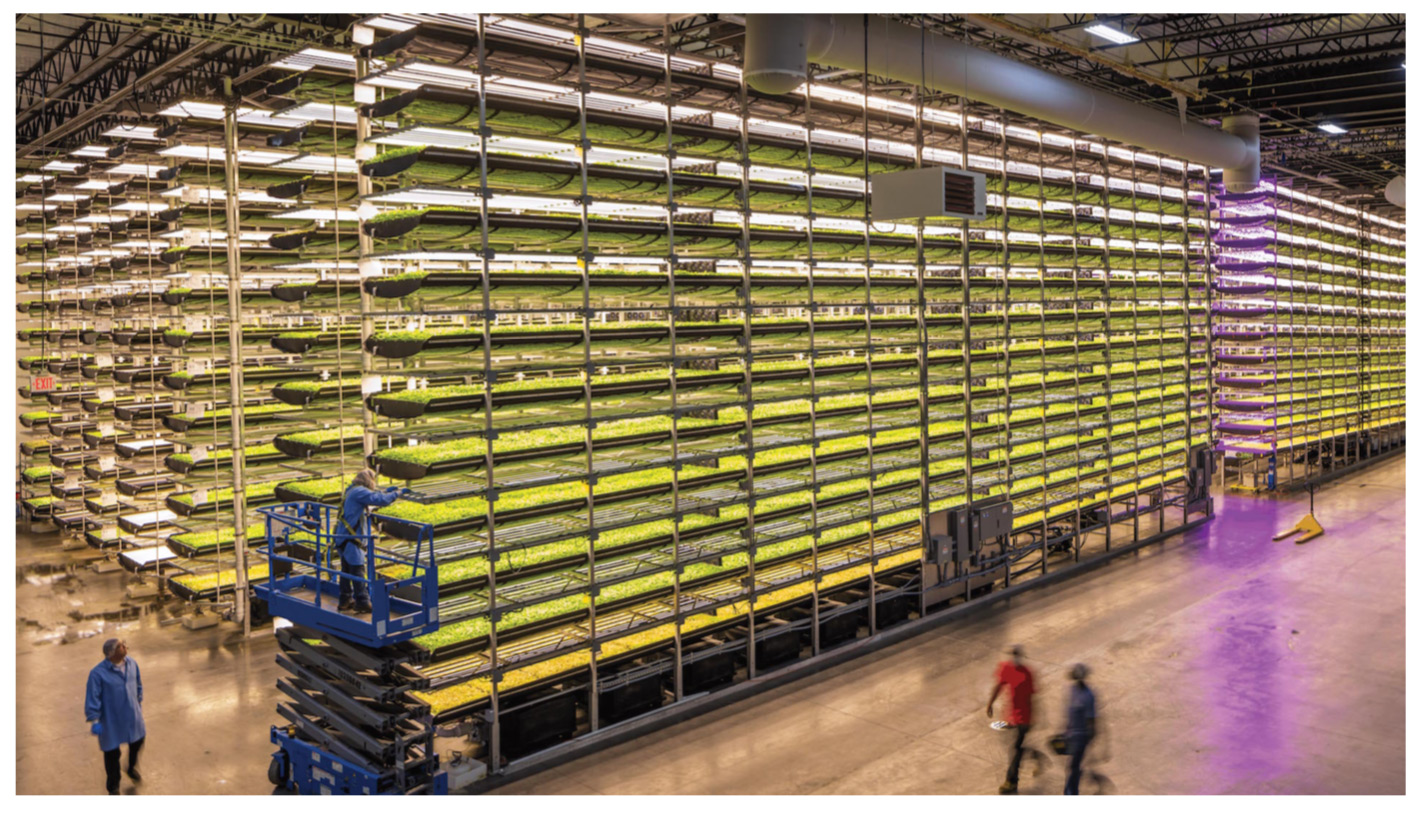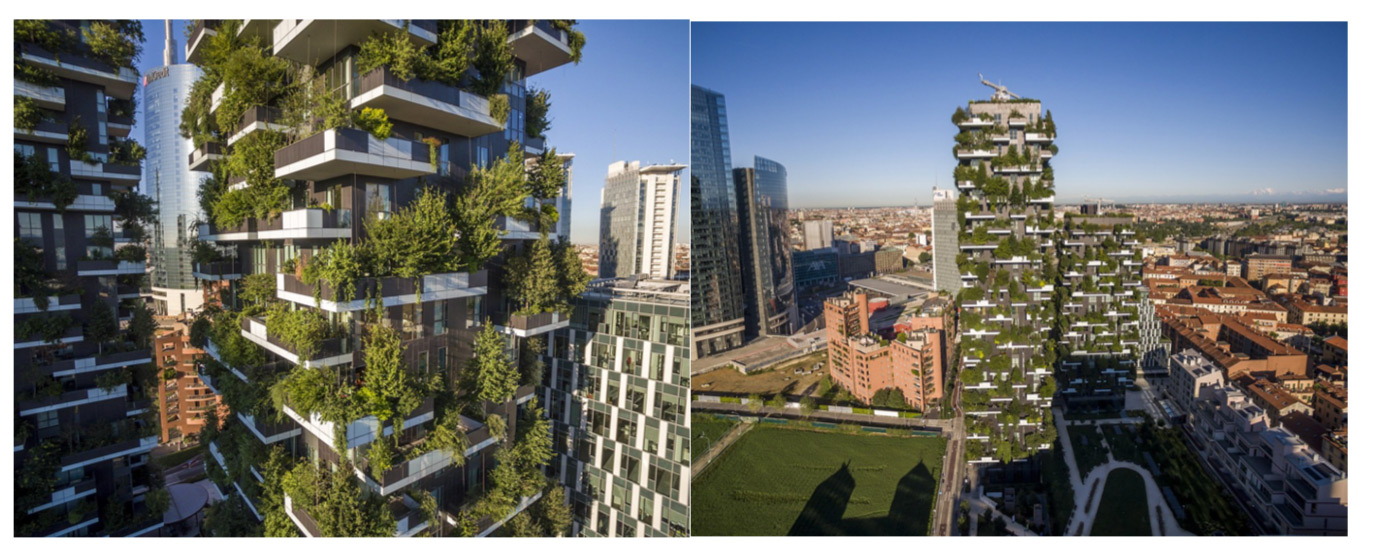Urban Vertical Farming
Since the end of World War II, American agriculture has increasingly represented a centralized model where the majority of food is grown in one large region (the “American Breadbasket”) and shipped elsewhere for processing and distribution. This has led to logistical challenges that indoor farms are designed to address, but providing a framework for climate-controlled indoor farming is only the first step. The next is urban vertical farming.
An urban vertical farm doesn’t use a flat plot of land or a large warehouse, but instead floors of city buildings that have been either built or modified for farming. This approach has existed in varied forms for millennia (the hanging gardens of Babylon perhaps most famous of them) and has been used in Europe since the 1850s.[14] Today, urban vertical farms are being constructed in London, Chicago, Milan and Newark, with future farms planned in several other cities.[15]
In the past, the feasibility of vertical farming has been limited by constraints inherent to resource scarcity, namely the cost of energy and materials. With the implementation of Scarcity Zero, these constraints would no longer be present in force, reducing the limitations to large-scale urban vertical farms, such as the following concepts:

At first glance, these systems might appear somewhat futuristic, but from an architectural or engineering standpoint, these designs present few challenges that have not been solved already in other industries with today’s technology.
They are well within the realm of feasibility, especially if energy costs and material limitations are removed from the equation. Accordingly, the following images show urban vertical farms that are actively operating around the world today:




Further, urban vertical farms have additional benefits that cannot be provided by warehouse-style indoor farms, making them especially attractive for cities with higher population densities. These include:
Smarter food production. While indoor farms may grow more crops at the size of a warehouse, urban vertical farms can still provide a major boost to food production. As urban vertical farms would exist directly within city centers, it effectively zeroes out the distance between production and consumption. In doing this, vertical farms redefine the notion of “farm to table,” as they would be within short distance of the millions of people they could provide food for.
Municipal water recycling. In addition to integrated water management, vertical farms could also have features that would not necessarily be available outside of an urban environment. Today, it is standard for water treatment systems to filter water based on what its purpose was. Grey water (water that’s been used for washing clothes or bathing) is treated differently than water that’s been used for cleaning dishes, and both are treated differently than water that’s used to process bodily waste. Using currently existing water filtration systems, waste water could be used in place of fresh water to grow crops in vertical farms. This would aid in recycling municipal water and also reduce the stress vertical farms could place on a given area’s water resources – unlimited water supply through the National Aqueduct notwithstanding.
This said, it’s noteworthy that food production isn’t the only application for vertical farming, as plants provide more value than just consumption. For example:
Soil is a great insulator. The idea of placing greenhouses on rooftops has been around for some time, and one of the most attractive supplementary benefits of doing so is their insulation potential. As hot air rises through a building, it escapes through the roof, which increases energy costs. Acting like a blanket, rooftop greenhouses work to keep as much energy as possible within a given building. This concept has already been applied in Italy with the Bosco Verticale towers in Milan, which were completed in 2015.[17]

Several cities have applied this concept further into law. New York City, for example, recently passed legislation requiring green roofs on new buildings within its jurisdiction.[18] Denver, Portland, San Francisco and Chicago have enacted similar measures to establish green rooftops for urban air purification and temperature control of city buildings.[19]
Plants are air purifiers. Plants are highly effective in scrubbing air of impurities and contaminants, which are often concentrated in cities. Large-scale urban agriculture through vertical farms can act as a massive, constant air filtration system. As allergies and respiratory ailments like asthma have been on the rise, this can provide a boost to public health both physically and mentally.[20]
 China has taken this to heart and has begun construction of the world’s first “forest city” that will integrate plants and trees directly within city buildings.[21] Planned for a 2020 completion date, the city is expected to be covered in one million plants and forty thousand trees.[22]
China has taken this to heart and has begun construction of the world’s first “forest city” that will integrate plants and trees directly within city buildings.[21] Planned for a 2020 completion date, the city is expected to be covered in one million plants and forty thousand trees.[22]
Indoor parks and greener cities are socially beneficial. Regardless of how far we have come in terms of technological advancement, connection to nature is important for human happiness, lower stress levels, higher productivity, and positive life outlook. For those of us who live in cities, disconnection from nature can sow the seeds of depression, and depression is a social toxin. But could you imagine how much less stressful life would be if you could just take an elevator to the roof of your office building and hang out in a tropical park for 30 minutes on your lunch break? Or walk off a city street into a large indoor park where it was bright, colorful and warm?
Daily exposure to nature, however short, can make a major difference, which not only leads to a happier and healthier society, but also improves collective hope, and thus the collective drive to seek, build, and do greater things. And as real estate for public parks faces high costs in cities, devoting floors of a building to a welcoming public hangout can significantly lower expenses for the same deliverable – especially if the park is on the roof of a building.